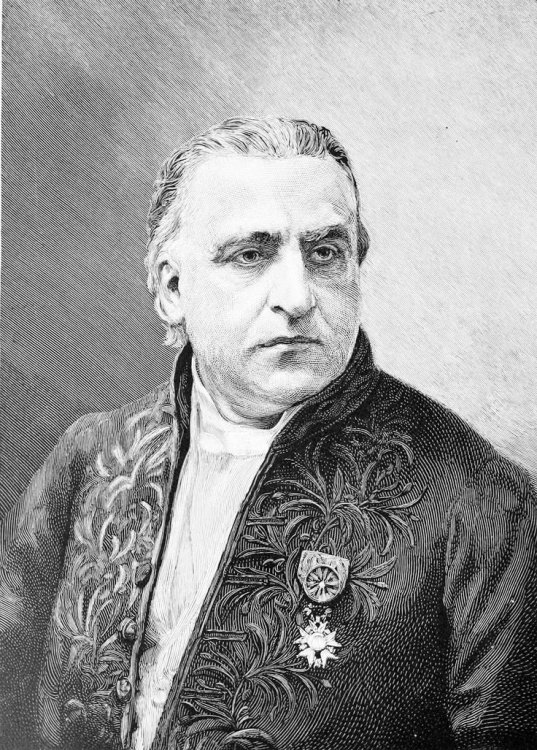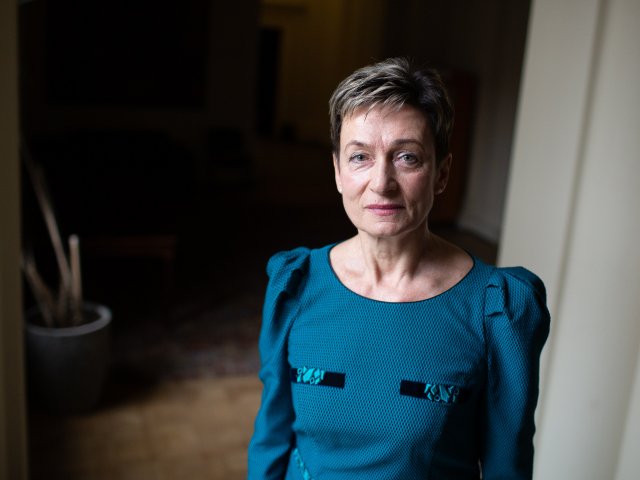Official:
Jean-Martin Charcot November 29, 1825 – August 16, 1893. French physician, one of the founders of modern neuropathology and psychiatry, member of Paris Academy of Sciences, “Shower Man.”
Life and Work:
1. In his youth Sigmund Freud, a famous expert in the depths of human souls, took an internship at another famous scientist who also treated souls and he even named his son Martin in the honor of this scientist. The thing is that they approached their work differently – one through psychoanalysis and the other by means of a shower.
2. French scientist Jean-Martin Charcot was nicknamed “the Napoleon of the neuroses.” He proved that men could also suffer from hysteria, he was the first to employ hypnosis as a method of treating hysteria, he founded the department of psychiatry at the University of Paris, in other words, he greatly contributed to the development of science.
3. The future luminary of neuropathology, whose name is now part of 15 medical terms, was born in Paris in a modest family of a carriage maker. However, the father managed to provide his elder son with education.
4. Upon graduating from the Faculty of Medicine of the Sorbonne University, Charcot became an intern at the Salpêtrière hospital. At that time that was an asylum for the elderly and lunatics. It was at this hospital where Charcot would head women’s neurology department and would turn it into a major research center.
5. At the Salpêtrière hospital, Charcot began giving lectures on internal and nervous diseases. These lectures were so successful that they were attended by numerous famous physicians and scientists. Charcot’s efforts resulted in establishing new laboratories and a pathoanatomical museum. Eventually the hospital was turned into a fully functional neuropathological institute. In 1882, Charcot chaired the new department of nervous diseases that opened at Salpêtrière thanks to the scientist’s, his co-workers’ and friends’ efforts.
6. Apart from Freud, Charcot’s students include Gilles de la Tourette whose name is now part of the syndrome, Alfred Binet and even Russian scientist Vladimir Bekhterev. In a special issue of Contemporary Psycho-Neurology dedicated to Charcot Bekhterev wrote that “Parisian physicians … were jealous of us, Russians, and made a joke that Charcot was of Russian origin. They linked his last name with the name of the Russian city of Kharkov which is pronounced Charcot in French.”
7. “No other person had a similar impact on me… I happened to leave his lectures feeling as if I had left Notre-Dame filled with a new notion of perfection,” recalled Freud. He also left the verbal portrait of the outstanding neuropathologist: “a tall man wearing a cylinder hat with dark eyes and an unusually soft glance, with long hair combed backwards, clean-shaven, with very expressive features: in short, this is a face of a mundane priest who you expect to reveal flexible sense and understanding of life.”
8. “As a teacher Charcot was nothing but brilliant,” continued Freud. “Each of his lectures was a little masterpiece in terms of structure and design, each phrase made a huge impact on the audience and provoked a response in the mind of every listener. The lectures were perfect in style and provided food for thought for the whole following day.”
9. We read in the Brockhaus and Efron Encyclopedic Dictionary that “Charcot’s fame is based on his work in neuropathology that he not only enriched with numerous facts and ideas, but also discovered new approaches and truly scientific methods of research. The 19th century pathology of nervous diseases may be considered the creation of Charcot and his school.”
10. Charcot described the so-called Charcot’s joint, the neurogenic swelling of the joint caused by the spinal cord degeneracy, he was the first to provide a detailed description of disseminated sclerosis and Charcot disease (amyotrophic lateral sclerosis), he provided a detailed description of the spinal cord physiology and anatomy and established the reasons for cerebral hemorrhage. The list of his scientific achievements is extremely extensive.
11. It was Charcot who suggested the term “Parkinson’s disease” that became widely accepted.
12. “The healing religious and worldly faith cannot be divided, it is one and the same mental process producing the similar effect,” claimed Charcot. In his book titled The Faith Cure the scientist wrote about the decisive role of faith, i.e., suggestion in the generation and treatment of hysteria that had been considered “uterine frenzy” before Charcot. The scientist explained all the “miraculous cures” thanks to saints, their relics, icons, etc. by the same mechanism that he demonstrated in his experiments involving hypnosis.
13. Charcot was famous throughout Europe. He was invited by royal families. His successful private practice gave him substantial funds and allowed to sustain a luxurious house in famous Saint Germain Boulevard in Paris.
14. Apart from research, Jean-Martin Charcot dealt with publishing and translation. He collected a vast medical library and established several journals dedicated to neurology and psychiatry.
15. Charcot was interested in art, especially in depicting people suffering from mental disorders. This interest was not vain: he and his student Paul Richer wrote the books Les Démoniaques dans l’art and Les Difformes et les Malades dans l‘art.
16. Charcot’s daughter Jeanne was an artist and later a curator of his museum. She spoke Russian. The scientist himself visited Russia twice and was cordially welcomed by the medical community.
17. Charcot’s son, Jean-Baptiste was a famous arctic explorer and oceanographer, a doctor and a sportsman. During one of his expeditions, he discovered an island 80 kilometers away from Alexander I’s land and he named it Charcot Island in honor of his father.
18. Nowadays Charcot douche is used to treat nervous disorders, gout, ill joints, but it has the most remarkable effect when treating obesity and cellulite. It is yet unclear whether Charcot could have foreseen this effect.






















